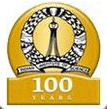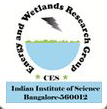 |
Assessment of Treatment capabilities of Varthur Lake, Bangalore, India |
 |
REFERENCES
- APHA (American Public Health Association) AWWA WEF 1995. Standard Methods for Examination of Water and Wastewater, 19th edition. Washington DC.
- Bellum, J.K. (1956) ‘Ecology of River Algae’, Botanical Review, Vol. 22, No. 5,pp.291-341.
- Bharali, J., Baruah, B.K. and Sarma H. P. (2008) ‘Studies on Physico-chemical Characteristics of Water of the wetlands in Kaziranga National Park, Assam’, Pollution Research, Vol. 27,No. 4, pp.729-733.
- Bindiya, C., Ashok, D., Hanjagi, N., Nandini., Aboud, S., Jumbe. (2008) ‘Environmental degradation of Mallathalli Lake in Bangalore district, India – A case study’, Nature Environment and Pollution Technology, Vol. 7, No. 2, pp.189-196.
- Central Pollution Control Board. (CPCB) Water Resource document. http://www.cpcb.nic.in/water.php. Accessed on 04 May 2009.
- Central Pollution Control Board. (CPCB). Status of wastewater generation and treatment in India. Resource document. www.umweltbundesamt.at/.../3b-Status_of_Wastewater_India.pdf, Accessed on 04 May 2009.
- Chanakya, H.N., and Sharatchandra, H.C. (2008) ‘Nitrogen pool, flows, impact and sustainability issues of human waste management in the city of Bangalore’, Current Science, Vol. 94, No.11, pp.1447-1454.
- Chanakya, H.N., Karthick, B., & Ramachandra, T.V. (2006) ‘Carbon and Nitrogen flows in Bellandur Lake – role of Bellandur lake as a natural wetland treating Bangalore wastewater’, Proceedings of Lake 2006.
- Chapman, D. (1996) Water Quality Assessments. E & FN SPON Chapman and Hall, London.
- Chaudhury, B.L., and Meena, L. (2007) ‘A Environmental Hazard – A case study of Toxic Bloom of Microcystis (Anacystis) Spp. In Udaipur Lakes Rajasthan (India)’, Journal of Herbal Medicine and Toxicology, Vol. 1, No. 1, pp.55-59.
- Dhanalakshmi, B., Lekeshmanswamy, M., and Varunprasad, K. (2008) ‘Seasonal variation of Sulur pond at Coimbatore, Tamil Nadu, India’, Nature Environment and Pollution Technology Vol. 7, No. 1, pp.147-150.
- Edokpayi, C.A., and Aneke, J.N. (2008) ‘Physico-chemical and Macrobenthic invertebrate Characteristics of a perturbed pond in Ekpoma, Edo State, Nigeria’, Pollution Research, Vol. 27, No. 2, pp.213-218.
- Faulwetter, J.L., Gagnon, V., Sundberg, C., Chazarenc, F., Burr, M.D., Brisson, J., Camper, A.K. and Stein, O.R. (2009) ‘Microbial processes influencing performance of treatment wetlands: a review’, Ecol. Eng., Vol. 35, pp.987–1004.
- Garg S.K. (2007) Sewage Disposal and air Pollution engineering, Env. Engg., Vol.II, Khanna Publishers, New Delhi.
- Ghosh, S.K, Das, P.K., and Bagchi, S.N. (2008) ‘PCR based detection of microcystin-producing cyanobacterial bloom from Central India’, Indian Journal of Experimental Biology, Vol. 46, pp.66-70.
- Government of Karnataka, (1990) Karnataka State Gazetteer. Lotus Printers, Bangalore. pp. 970, 16, 215.
- Hammer, M.J., and Hammer, M.J. Jr. (2001). Water and Wastewater Technology (4th ed.), Prentice-Hall, Inc., Upper Saddle River, NJ, USA.
- Heron, J. (1961). Phosphorous adsorption by lake sediments. Limnology and Oceanography, Vol.6, pp.338.
- Hooper, A.B., Vannelli, T., Bergmann, D.J., and Arciero, D. (1997). Enzymology of the oxidation of ammonia to nitrite by bacteria, Antonie van Leeuwenhoek Vol. 71, pp.59–67.
- Hujare, M. S., (2008) ‘Limnological studies of the perennial Water body, Attigre tank, Kolhapur Dist., Maharashtra’, Nature Environment and Pollution Technology, Vol. 7, No. 1, pp.43-48.
- Johnson, K.D., Martin, C.D., Moshiri, G.A. and McCrory, W.C. (1999) Performance of a constructed wetland leachate treatment system at the Chunchula Landfill, Mobile County, Alabama. In: G. Mulamoottil, E.A. McBean and F. Rovers, Editors, Constructed Wetlands for the Treatment of Landfill Leachates, CRC Press LLC, Boca Raton, FL, USA (1999), pp.57–70.
- Kapil, N., and Bhattacharya, G. K. (2009) ‘Temporal, Spatial and Depth Variation of nutrients and Chlorophyll content in an Urban Wetland’, Asian Journal of Water, Environment and Pollution, Vol. 6, No. 2, pp.43-55.
- Karibasappa, H., Aravinda, H.B., and Manjappa, S. (2009) ‘A study on Eutrophication Level in Hosur Town Lakes’, Nature Environment and Pollution Technology, Vol. 8, No. 2, pp.297- 300.
- Kataria, H.C., Iqbal, S.A., Shandilya, A. K., (1995) ‘Limno-chemical studies of Tawa reservoir’,Indian J Environ Prot.,Vol. 16, No.11, pp.841-846.
- Koops, H.P., and Pommerening-Röser, A. (2001) ‘Distribution and ecophysiology of the nitrifying bacteria emphasizing cultured species’, FEMS Microbiol. Ecol. Vol. 37, pp.1–9.
- Kumara, K.S. and Belagali, S.L. (2008) ‘Preliminary study on selected parameters of Tumkur Sewage’, Nature Environment and Pollution Technology, Vol. 7, No. 2, pp.319-326.
- Martin, G. (1987). Le point sur l’épuration et le traitement des effluents: le phosphore, Vol. 3. Technique et Documentation Lavoisier, Paris, pp.1–298.
- Munch, C., Kuschk, P. and Roske, I. (2005) ‘Root stimulated nitrogen removal: only a local effect or important for water treatment’, Water Sci. Technol. Vol. 51, No. 9, pp.185–192.
- Paredes, D., Kuschk, P., Mbwette, T.S.A., Stange, F., Muller, R.A. and Köser, H. (2007) ‘New aspects of microbial nitrogen transformations in the context of wastewater treatment—a review’, Eng. Life Sci., Vol. 7, No. 1, pp.3–25.
- Parinet, B., Lhote, A. & Legube, B. (2004) ‘Principal component analysis: an appropriate tool for water quality evaluation and management—application to a tropical lake system, Ecol. Model., Vol. 178, pp.295–311.
- Purkhold, U., Pommerening-Roser, A., Juretschko, S., Schmid,M.C., Koops, H.P.,Wagner, M. (2000) ‘Phylogeny of all recognized species of ammonia oxidizers based on comparative 16S rRNA and amoA sequence analysis: implications for molecular diversity surveys’, Appl. Environ. Microbiol., Vol. 66, pp.5368–5382.
- Purkhold, U., Wagner, M., Timmermann, G., Pommerening-Röser, A., Koops, H.P. (2003) ‘16S rRNA and amoA-based phylogeny of 12 novel betaproteobacte- rial ammonia-oxidizing isolates: extension of the dataset and proposal of a new lineage within the nitrosomonads’, Int. J. Syst. Evol. Microbiol. Vol. 53, pp.485–1494.
- Ramachandra, T. V., Ahalya, N., and Mandy Payne. (2006) ‘Status of Varthur Lake: Opportunities for Restoration and Sustainable Management. Technical Report: 102, CES, Bangalore.
- Ramachandra, T.V, Rajasekara Murthy, C., and Ahalya, N. (2001). Restoration of lakes and wetlands. Proceedings of Lake 2000. CES Technical Report 87, CES, Bangalore.
- Ramachandra, T.V., and Uttam Kumar. (2008) ‘Wetlands of Greater Bangalore, India: Automatic Delineation through Pattern Classifiers, Electronic Green Journal, Vol. 26, pp.076-7975.
- Raveen, R., Chennakrishnan, C., and Stephen, A. (2008) ‘Impact of pollution on quality of water in three freshwater lakes of suburban Chennai’, Nature Environment and Pollution Technology, Vol. 7, No. 1, pp.61-64.
- Region special Area Development authority, Nainital Lake, Resource material http://www.cig.ensmp.fr/~iahs/hsj/496/hysj_49 _06_1099.pdf Accessed 4th May, 2009.
- Ryding, S.O., and Rast, W., 1994. Le contr ˆ ole de l’eutrophisation des lacs et des réservoirs. Masson, Paris, pp.1–294.
- Sharma, R.D., Lal, Neeru., and Pathak, P.D. (1981) ‘Water quality of sewage drains entering Yamuna at Agra’, Ind. J. Environment and Health. Vol. 15, No. 3, pp.153-158.
- Silva, E.I.L, (2003) ‘Emergence of a Microcystis bloom in an urban water body, Kandy Lake, Sri Lanka’, Current Science, Vol. 85, No. 6, pp.723-725.
- Sinada, F., and Abdel Karim, A.G. (1984) ‘Physical and chemical characteristics of Blue Nile and the White Nile at Khartoum’, Hydrbiologia, Vol. 110, pp.21-32.
- Stephen, J.R., McCaig, A.E., Smith, Z., Prosser, J.I., Embley, T.M. (1996) ‘Molecular diversity of soil and marine 16S rDNA sequences related to β-subgroup ammonia oxidizing bacteria, Appl. Environ. Microbio,. Vol.62, pp.4147–4154.
- Solanki, Venkata Ramanaiah, Samba Murthy, S., Kaur. Amarjit and Sabita Raja, S. (2007)‘Variations in Dissolved Oxygen and Biochemical oxygen Demand in two freshwater lakes of Bodhan, Andhra Pradesh, India’, Nature Environment and Pollution Technology, Vol. 6, No. 4, pp.623-628.
- Srivastava, S. K., Pandey, .P.C., Mahanta, P.C., and Gopalkrishna. (2007) ‘Assessment of Water Quality of a Freshwater body, Ramgarh Lake, Gorakhpur, U.P’, Asian Journal of Microbiology, Biotechnology & Environmental Science, Vol. 9, No. 3, pp.665-668.
- Sudhira, H.S., Ramachandra, T.V., and Bala Subrahmanya M.H. (2007) ‘City Profile Bangalore’, Cities, Vol. 24, No. 5, pp.379-390.
- Toshiniwal, S.S., Matkar, R.R., and Bhure, D.B. (2006) ‘Study on some physico-chemical parameters of Tisgaon Lake water in Aurangabad District, India’, Asian Journal of Microbiology, Biotechnology and Environmental Science., Vol. 8, No. 3, pp.719-720.
- Vollenweider, R.A., Rast, W., Kerekes, J.J. (1980). The phosphorus loading concept and Great lakes eutrophication. In: Loehr, R.C., et al. (Eds.), Proceedings of the 1979 Cornell University Conference Phosphorus Management Strategies for Lakes. AnnArbor Sci. Publ. Inc., pp.207–234.
- Zhu, T., and Sikora, F.J. (1994) ‘Ammonium and nitrate removal in vegetated and unvegetated gravel bed microcosm wetlands’, Water Sci. Technol., Vol. 32, No. 3, pp.219–228.
|